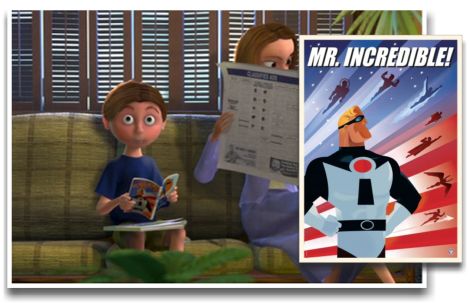The novel The Hundred and One Dalmatians by Dodie Smith was first published in 1956. Walt Disney secured the film rights to the book in June, 1957. The completed film was released on January 25, 1961. It was an exceptionally fast journey from author creation to screen realization, and hence, despite the original novel emerging over time as an unsung classic of children's literature, the film 101 Dalmatians has always dramatically overshadowed its own source material.
When Dodie Smith first set to write The Hundred and One Dalmatians in the mid-1950s, she was already recognized as an accomplished playwright, screenwriter and novelist. The inspiration for the story came from her own love of dalmatians. With her husband Alec Beesley, she had owned a dalmatian named Pongo, who passed away in 1940. Shortly after Pongo's death, the couple acquired two new dalmatians, Folly and Buzz. In 1943, Folly gave birth to fifteen puppies, one of which appeared to be stillborn. Alec revived the pup, and those events, combined with a somewhat insensitive comment from a friend ( . . . their skins would make a nice coat) became the basis of the book she would write a decade later.
Upon acquiring the rights to Smith's book, Walt immediately handed the project to studio veteran Bill Peet. In his autobiography, Peet related:
"Walt wanted me to plan the whole thing: write a detailed screenplay, do all the storyboards,and record voices for all the characters . . . I scrawled my manuscript for Dalmatians on large yellow tablets and worked at it with a frenzy every day and on through the weekends. I left out some parts of Dodie Smith's book and enlarged on others without losing the strange twists and turns in the wildly suspenseful story."
There are quite a few name changes from book to film. The Dearlys in the book (no first names are ever provided) become Roger and Anita in the movie. The couple's servants, Nanny Cook and Nanny Butler, are combined into one character for the film. In the book, the name of Pongo's wife is Missis; Perdita is in fact a wholly different character. She is a stray who is found by Mrs. Dearly and brought home to act as a wet nurse for some of the puppies. The elimination of the book's Perdita character was perhaps the only major disappoint Smith expressed with Peet's adaptation. Perdita and her backstory were the basis of a clever plot twist that Smith revealed in the final chapter of the book.

Peet stayed generally true to Smith's story but did eliminate a number of book's sequences and created an entirely different final confrontation between the dogs and the villainous Cruella de Vil. The journey of Pongo and Missis across country to Hell Hall is significantly shortened, and a dramatic scene in which Cruella stands atop her car and applauds a burning building is eliminated completely. There is no climactic car chase in the book. Instead, Pongo and the entire brood are provided entry into the de Vil home by Cruella's white Persian cat, at which point they set about destroying Cruella's quite large and extensive collection of furs:
There was not enough space in one room to finish the whole job, so the pups spread themselves throughout the house. After that, the fur flew like a vengeance--in every direction. Chinchilla, Sable, Mink and Beaver, Nutria, Fox, Kolinsky and many humbler skins--from kitchen to attic the house was filled with a fog of fur. And the white cat did not forget the ermine sheets. She did good work on those herself, moving so fast that it was hard to see which was clawed white ermine and which was clawing white cat.
Cruella arrives home shortly thereafter with Mr. de Vil (also eliminated from the film; "he was a small, worried-looking man who didn't seem to be anything besides a furrier"), at which point Pongo and Missis steal her elaborate mink cape. After entering the house, " . . . Cruella could be heard shrieking with rage." It is subsequently learned that the destruction of the furs impacted the de Vils financially and they were forced to flee England to escape their debts.
Other interesting variations from the book:
- Mr. Dearly is not a songwriter, but an accountant. "He had done the government a great service (something to do with getting rid of the national debt) and, as a reward, had been let off his income tax for life."
- The Dearlys purchase Hell Hall and turn it into their "dalmatian plantation," although Smith never used that particular play on words.
- Smith created the television show What's My Crime, but the program Thunderbolt was exclusive to the film.
- The puppy that is resuscitated by Mr. Dearly, called Cadpig, is never identified by name in the film.
Smith enthusiastically endorsed the film, although she in good nature chided Walt about how small her name appeared in the opening credits. She wrote a sequel to the book that was published in 1967. The Starlight Barking was distinctly different from its predecessor with a storyline that involved an extraterrestrial character, Sirius, Lord of the Dog Star, attempting to evacuate all dogs from the planet in order to save them from the threat of nuclear war.
Walt Disney had also secured the rights to Smith's earlier adult novel, I Capture the Castle. He had hoped to cast Haley Mills in the starring role, but the proposed film was ultimately never made.
Illustrations from The Hundred and One Dalmatians by Janet and Anne Grahame Johnstone.





































































